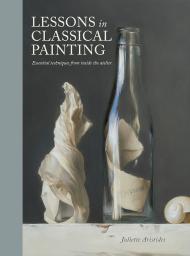Lee Miller was not only Man Ray’s muse, but above all, a professional in her own right
Model, photographer, muse, the first female war correspondent to report the horrors of the concentration camps liberated by American troops, and a 20th-century icon. Lee Miller was all this and much more. She went through life with passion and determination and life repaid her with love and friends, but also with pain and posthumous, or at least tardy, acknowledgement.
Through approximately 140 photographs by Lee Miller and Man Ray, some objects d’art, and video documents loaned by Lee Miller Archives and Fondazione Marconi, this book intends to do justice to this woman, as beautiful as she was clever and talented, taking her out of Man Ray’s overpowering shadow. It will reveal a deep but complicated relationship more objectively (Man Ray was first her teacher, then lover, and in the end friend), and document the effect they both had on each other and how it inspired their work.
Published on the occasion of the exhibition in Venice, the volume features texts by the curator, Ami Bouhassane (Miller’s granddaughter), and Anthony Penrose (Miller’s son). Moreover, it includes portraits by Man Ray of friends and important protagonists of the period (Max Ernst, Pablo Picasso, Giorgio de Chirico, Jean Cocteau, Salvador Dalí), as well as surrealist shots of Lee Miller in which she seeks to investigate and reveal her soul and torments.
_________
The exhibition offers a portrait of Surrealism through two of its greatest exponents, with more than 100 photographs, artworks and new relevant documentation.
In 1929, Elizabeth “Lee” Miller, a young American model often seen in Vogue magazine, arrived in Paris with the intention of becoming a photographer. Uninvited and with no prior introduction, she presented herself at the studio of Man Ray, a noted Surrealist artist and photographer specialising in portraits of contemporary society, insisting that she become his apprentice. The encounter marked the beginning of a lifelong relationship. The years 1929-1932 were a time of particularly fertile collaboration, during which the fiercely independent, highly motivated Lee was soon alternating in the roles of apprentice, photography assistant, lover and muse. After that period, Lee opened and successfully managed her own studio. As prominent figures in avant-garde society (Paris, New York and London) and close friends of such leading artists as Picasso, Jean Cocteau, Max Ernst, and Paul Eluard, Ray and Miller formed part of the early liberal surrealist milieu of the 20s and 30s.
The book, published to complement the Milan exhibition, aims to establish Miller’s remarkable talent as a photographer, setting her on a par with Man Ray, whose work has tended to overshadow hers, and to re-examine the couple’s professional and personal relationship. It also reveals the crucial ways in which Lee Miller inspired Man Ray’s work at that time as well as later, including the discovery of the photographic technique of solarisation, which quickly became Ray’s most widely recognised style. Through a wide selection of their portraits of famous people, their relationship is used as a lens through which to critically re-evaluate and re-interpret the relationship between the two within the Surrealist movement and the broader avant-garde society of Paris between the mid-20s and the late 30s.
About the Author:
Victoria Noel-Johnson is an independent British art historian and curator, specialising in early 20th-century European art.














